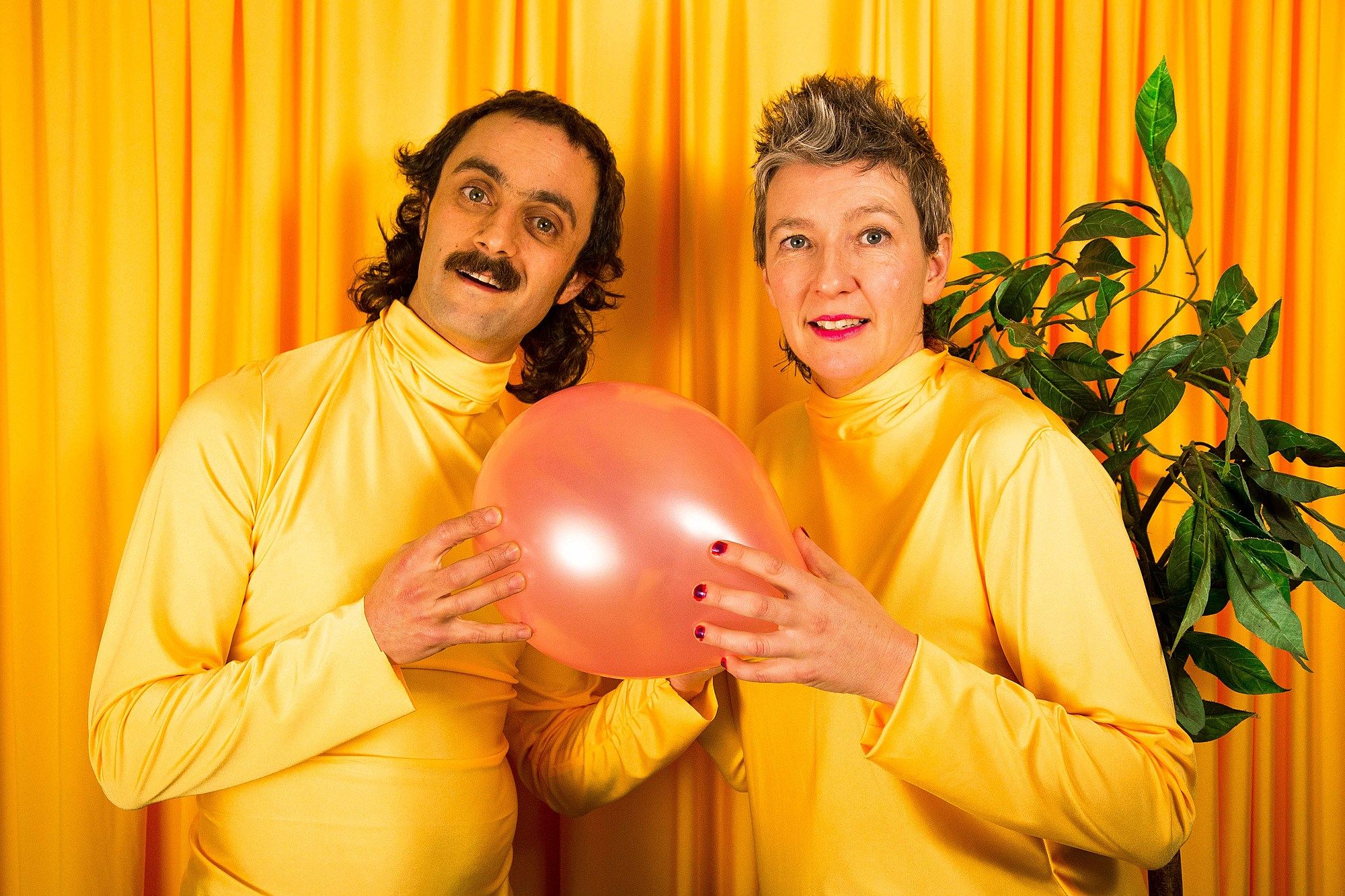Monster Mash: A Review of Soft N Hard
Jo Randerson and Thomas LaHood dig deep into the absurdity of gender performance; reviewer Hannah Banks joins them for the ride.
Jo Randerson and Thomas LaHood dig deep into the absurdity of gender performance and reviewer Hannah Banks joins them for the ride.
A pause. Thomas is looking at Jo, the weight of masculinity on his shoulders. He’s spluttering something about how he can't help it and it's not his fault. He’s circling around the phrase, "Not all men,” and it’s almost hanging in the air. Jo sighs. “Take some responsibility and try to stop it, even if it’s not you.” It’s a sentence that I’ve longed to say out loud to so many people. Sometimes I wish I could have just screamed it into the ether.
Barbarian’s Soft N Hard is full of moments like this. Moments when I want to scream at the restrictions and frustrations of gender, moments that I relate to so hard that all I can do is laugh hysterically, moments when I want to spontaneously applaud the truthful genius of its writers and performers, Jo Randerson and Thomas LaHood. Moments that make me feel like I can fight back. Soft N Hard began life as two solo shows about masculine- and feminine-gendered roles, spaces and behaviours. I’m thrilled that the works have been merged into this one hilarious, insightful and wickedly honest exploration of the soft and the hard.
Randerson and LaHood quite literally wrestle with the construction and the performance of gender. Their first characters are abstract and heightened suggestions of the heteronormative ‘male’ and ‘female’: a silky gold hoop of fabric ruffling and slipping its way around, discovering its boundaries to the soothing yet hilarious 'Only Time' by Enya; and a bombastic black rubbish bag figure, literally full of hard air as it marches around the stage. The two performers then slowly construct their gender. A pair of pale pink heels transform softness into 'Her'. A lounge chair and beer bottle help hard to become 'Him'. The fabric is pulled down and becomes a dress; the rubbish bag is deflated to reveal a hirsute chest. Eventually they reveal their faces and the fun truly begins.
The space they play in is both troubling and inviting. The Heyday Dome is lined with vibrant yellow curtains; Poppy Serano’s tricksy set design creates a clear barrier, a construction of two spaces: here and there, his and hers. At times it feels like the set is alive, a character of its own, as a Dr. Seuss like yellow arm pushes out different props to challenge or disarm Him and Her. It’s simultaneously joyful and sickening.
Him puts on a tie and Her reads a letter apologising for her existence, desperately trying to make her voice and feelings heard.
Serano’s costumes tell just as much story as the performers do. A simple scarf in Randerson’s hands, for example, represents a century of women’s oppression. Owen McCarthy’s lighting design evolves with the performers, subtly matching their tone as we move through Him and Her’s confusions and frustrations, shifting from a lush and rich palette full of colour, into a clearer and more direct light. My favourite aspect of the design, though, is Waylon Edwards’ pitch-perfect sound design. Edwards' music choices support the action with joyous comic timing, such as when the opening bars of Tracy Chapman’s 'Baby Can I Hold You' are repeated, while we all wait for Him to gather the courage to sing the opening word of “Sorry…”
Randerson and Lahood are incredibly skilled performers. They’re completely in control but they’re fantastic at creating chaos, an air of risk, that anything could happen. Once they’ve constructed their genders, the clownlike Him and Her, they set about exploring the endless contradictions of gender relations. These naïve clowns, ridiculous but emotionally fluid, deftly play with our expectations. They shove stereotypes and clichés under a metaphorical spotlight, poking at them and questioning them; they let us in on the joke, then subvert it. Her finds a mirror and is rewarded with pale pink office attire; Him is called behind the curtain by the sound of endless dudes chanting, “Do it! Do it! Do it!” Her tries to follow, but the gap in the curtain is suddenly blocked by pink wallpaper – she’s trapped in her feminine space. Him puts on a tie and Her reads a letter apologising for her existence, desperately trying to make her voice and feelings heard. She’s ignored by Him; when she finally gets to escape the space, Him stays, living out his war hero fantasy.
Him and Her eventually clash. Their spaces collide; their systems for communication and language are at odds. The literal walls of the space start to collapse and the boundaries between character and performer start to blur. Him and Her become Thomas and Jo, husband and wife, and we watch the public and the private battle it out on stage. Jo takes a breath and says, “I just want you to stop… squishing my existence.” It’s dazzling and tense. The façade is gone. This feels real.
In the programme, director Isobel MacKinnon describes how we can feel like monsters in people suits when we try to live and love alongside another human. In the final act, Randerson and LaHood are revealing their monsters. It is raw, intimate and beautiful. The generosity of this blows me away; their honesty pushes us to consider our own sticky and unshakeable thoughts and behaviours about the performance of gender. We cannot just passively watch while Randerson and LaHood reveal themselves and demonstrate that these awkward conversations can and must be had. They know that there is no easy solve, no quick fix for the issues in gender relations. Not even theatre as magical as this can fully solve these problems. But by putting themselves in their work and letting us into that life, we all connect and acknowledge how challenging it can be when we are confronted by the monster within ourselves.
Mackinnon has done a stunning job of bringing everything and everyone together; nothing seems like an afterthought. Whether it’s the perfect prop being pushed through the curtain, the superb comic timing of Celine Dion’s 'It’s All Coming Back To Me Now' as Her tries to escape, or the carefully-crafted collapse of the spaces and walls between the characters, everything in this production is laden with meaning. But while Soft N Hard attacks difficult topics, lays down challenges and provokes us to more deeply consider our expectations around the meaning of gender, it never feels heavy. It’s fun, an absolute pleasure and privilege to spend an hour with.
Soft N Hard runs from 22–26 August 2017 at BATS Theatre.
New season 2019
Soft N Hard runs from 20–24 August 2019 at Loft at Q Theatre, Auckland.
Tickets available here.
Soft N Hard will also be performed as part of the Toi Wāhine Festival in Hamilton on 20 & 21 September 2019.

